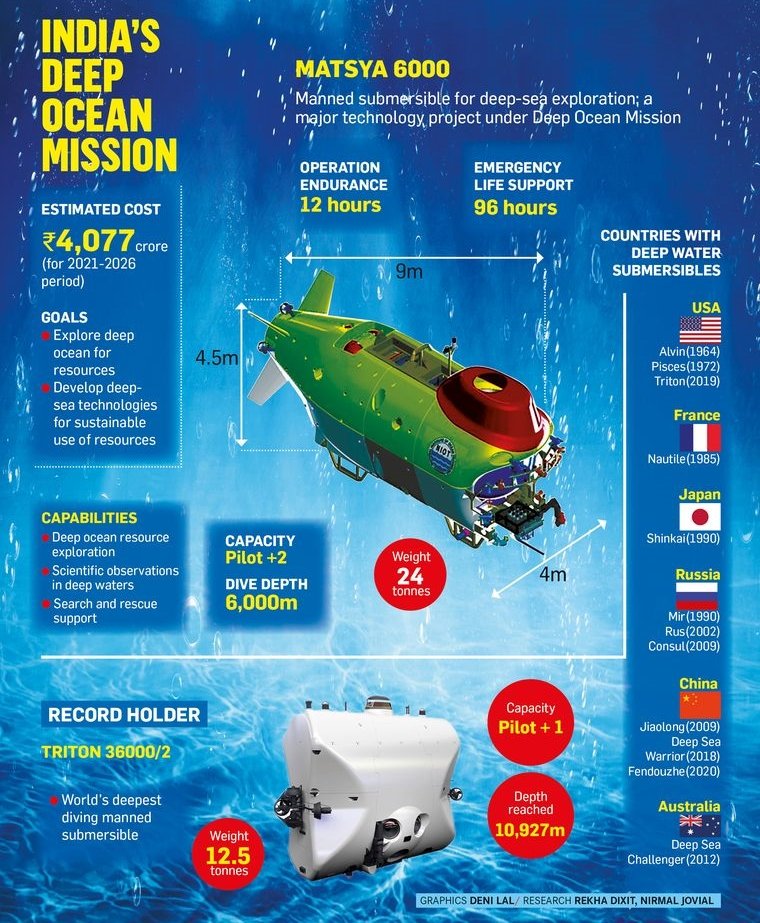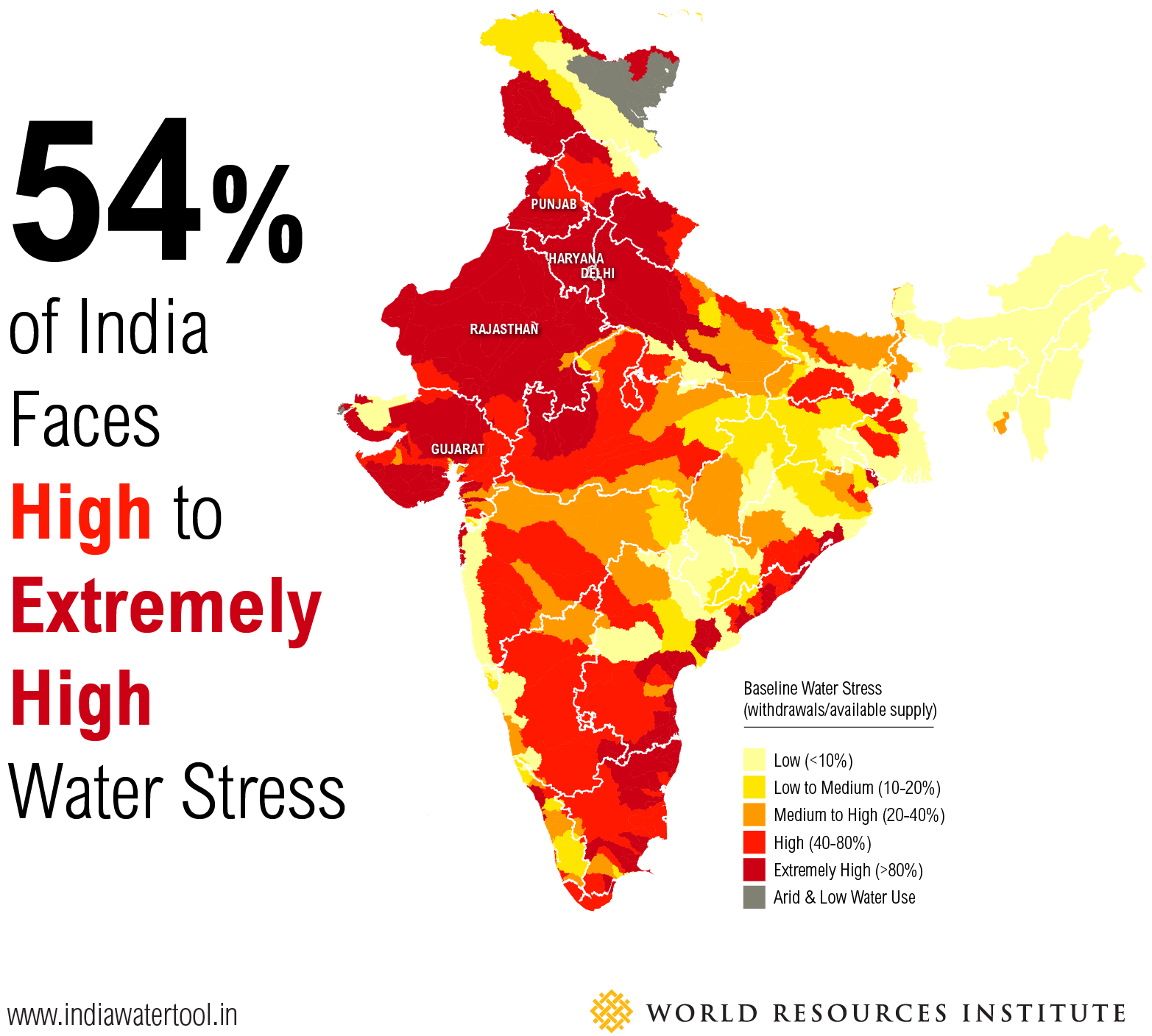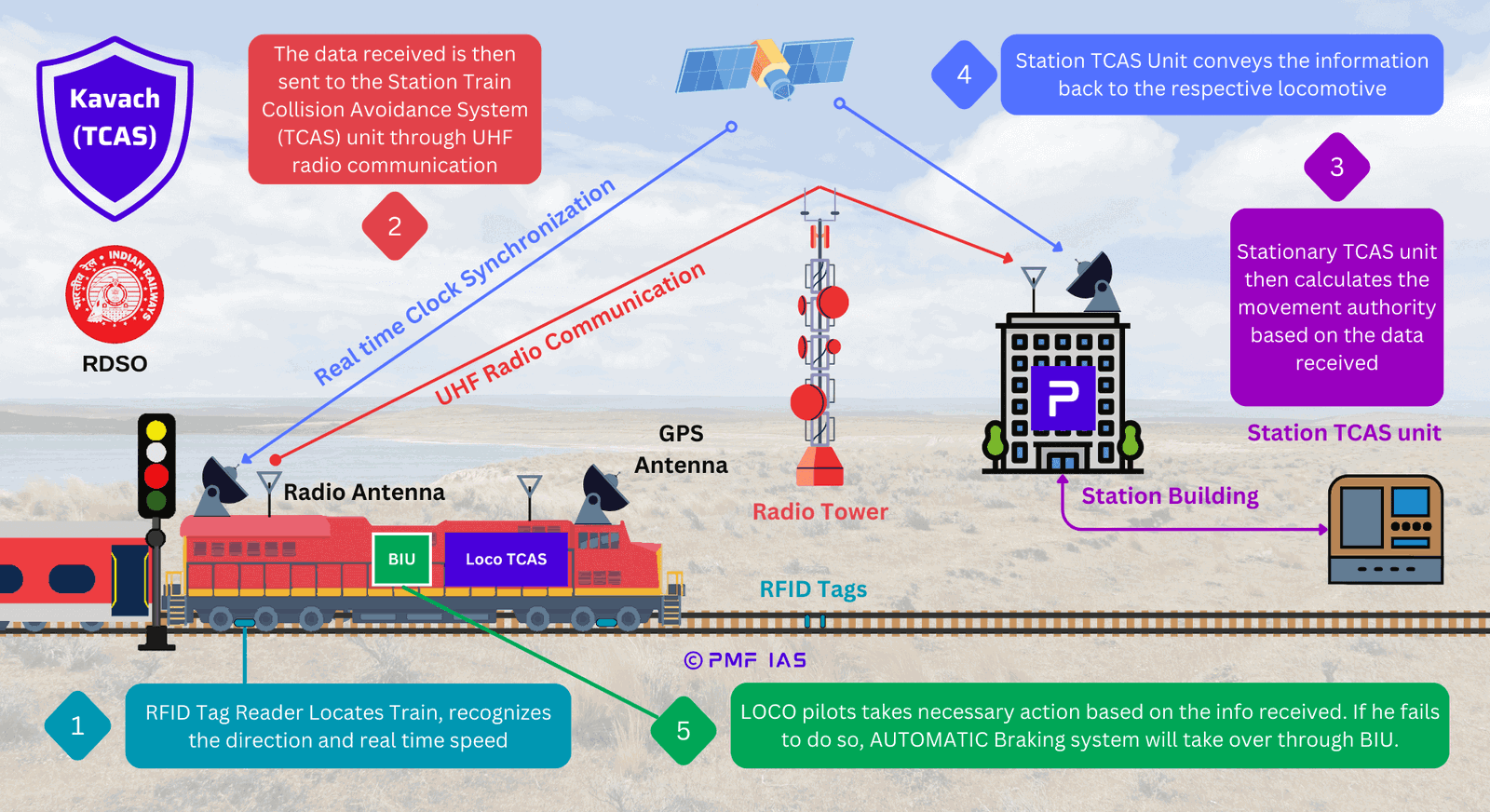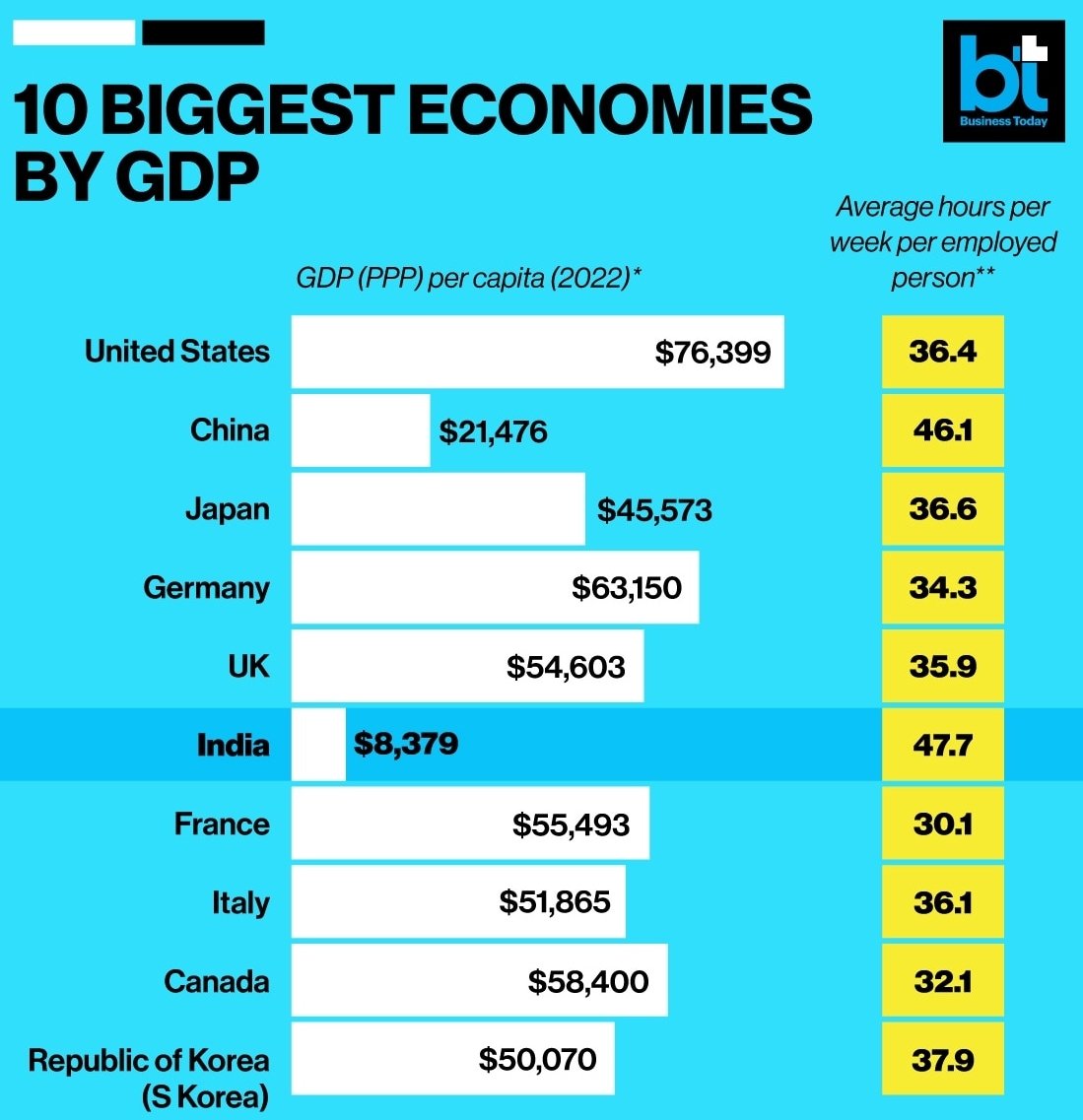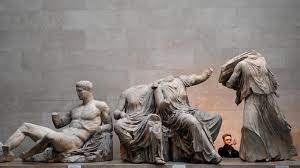
Current Affairs November 13-14, 2023: Golden Passport, Plastic Pollution, GWP* Greenwashing, Asia Pacific Economic Forum (APEC), Birsa Munda
Subscribers of "Current Affairs" course can Download Daily Current Affairs in PDF/DOC
Subscribe to Never Miss an Important Update! Assured Discounts on New Products!
Must Join PMF IAS Telegram Channel & PMF IAS History Telegram Channel
{GS1 – Geo – PG – Climatology} Deforestation in Maritime Continent and ENSO
- Context (DTE | PHY): Deforestation in the Maritime Continent (MC) is making El Nino-Southern Oscillation (ENSO) more unpredictable.
Maritime Continent (MC)
|
El Nino-Southern Oscillation (ENSO)
- ENSO is a cyclical climate pattern marked by temperature fluctuations in the central and eastern tropical Pacific Ocean.
- El Niño (warm event) and La Niña (cold event) are the extreme phases of the ENSO cycle; between these two phases is a third phase called ENSO-neutral (neither El Niño nor La Niña).
- During El Niño, the central and eastern tropical Pacific Ocean warms up.
- During La Niña, the central and eastern tropical Pacific Ocean cools down.
How Deforestation in MC is Going to Effect ENSO
- Deforestation reduce evapotranspiration and alters surface albedo (the amount of sunlight reflected by Earth’s surface).
- This warms the ambient environment which impacts land-atmosphere-ocean interactions.
- Impact of the warming up of ambient environment on ENSO:
- ENSO will become more frequent multi-year event.
- Its predictability will become difficult.

Impact of More Frequent Multi-Year ENSO
- Weather extremes: Multi-year ENSO events can contribute to prolonged periods of extreme weather conditions, such as severe droughts or heavy rainfall.
- Agricultural disruptions
- Difficulty in water resource management
- Disrupt ecosystems
- Increased risk of wildfires: Prolonged El Niño elevate the risk of wildfires in susceptible regions.
- Hurricane activity: For e.r., prolonged El Niño will enhance hurricane activity in the Pacific.
{GS1 – MIH – Personalities} Birsa Munda
- Context (IE): Birsa Munda was born on November 15, 1875.
- Birsa Munda was a young freedom fighter and a tribal leader. He was a member of the Munda tribe.
- Birsa converted to Christianity in order to join the German Mission school.
- He passed the lower primary examination from the German Mission of Buzru.
- He was expelled from the school for criticising missionaries, which was a turning point in his life.
- His perception of the missionaries and the government made him anti-missionary and anti-government.
- In 1860, his family gave up membership of the German Mission.
|
New Religion by Birsa Munda
- Birsa declared himself a god and preached his religion (ideals) among Mundas.
- He used Hindu and Christian idioms to create the Munda ideology and worldview.
- Thousands of Mundas became his followers, who became known as Birsaites.
- He advocated the prohibition of cow slaughter.
- He asked his followers to pray thrice a day, to live clean, live in love and harmony with one another and to organise collective progress.
Birsa Munda Revolt (1895-1901)
- The movement led by Birsa Munda was directed against the outsiders (dikus): landlords, traders, merchants, and government officers.
- These classes were created by the British after introducing the British policies in the areas inhabited by Munda.
- The Mundas held the dikus and the missionaries responsible for their miseries.
- They felt that their miseries could be ended only by removing the outsiders and establishing their independent raj.
- Birsa urged his followers to rebel against dikus and establish Birsa Munda Raj.
- On March 3, 1900, Birsa Munda was arrested by the British police while he was sleeping with his tribal guerilla army at Jamkopai forest in Chakradharpur.
- He died in Ranchi jail on June 9, 1900, at the young age of 25.
Impact of the Movement
- The government abolished the compulsory begar system and passed the Tenancy Act of 1903, which recognised the Mundari Khuntkatti system.
- The Government passed the Chotanagpur Tenancy Act in 1908.
- The revolt forced the Mewar durbar to sign a 21-point agreement.
Chotanagpur Tenancy Act (1908)
- Sought to protect the Munda land system.
- Prohibit the transfer of tribal land.
- Recognise tribal rights to reclaim land and create a new administrative unit.
{GS1 – MIH – Personalities} Kazi Nazrul Islam
- Context (IE): Recently, a song (Karar Oi Louho Kopat) composed by Bengali Poet Kazi Nazrul Islam in 1992 as a nationalist anthem against the British Raj has been widely criticized in West Bengal and Bangladesh.
- Kazi Nazrul Islam was a Bengali Poet, writer, musician, and philosopher born in May 1899 in Churulia, Bengal Presidency in a Muslim Taluqdar family.
- He is popularly known as the ‘Rebel Poet’ (Bidrohi Kavi) since most of his works are of protest and revolution which inspired the freedom fighters in their struggle against colonialism and imperialism.
- He was an exponent of religious tolerance and condemned religious fanaticism.
- He was charged with Sedition charges for his poem ‘The Coming of Anandamoyee.’
- He compared the British colony to a ‘Butchery’ where ‘God’s children’ were whipped and hanged.
- He composed many Hindu Bhajans and Kirtans and became the 1st Muslim director to helm a Bengali film.
- In 1972, he was granted the citizenship of Bangladesh and was designated as a national poet of Bangladesh in 1972.
- He was recognized as ‘Ekushey Padak’, the country’s second-highest civilian award, and was awarded the Padma Bhushan by the GoI.
- His remains are buried in Bangladesh.
{GS2 – IR – Effect of Policies on India} Golden Passport Scheme
- Context (IE | ET | TOI): Prominent Indian industrialists gain Cyprus citizenship under Cyprus Investment Program, a Golden Passport Scheme.
- Golden passport schemes or citizenship by investment (CBI) programs, allow individuals to obtain citizenship in a country by making a significant investment.
|
Benefits of Golden Passport Scheme
- Global Mobility: Golden passports typically grant holders visa-free travel to many countries.
- For e.g., Indian passport will allow visa-free entry to just 60 countries. In contrast, passports of Carribbean nation will grant access to 157 countries including the EU and the UK.
- Business opportunities: European countries, with Germany at the forefront, are ranked highest for providing for facilitating business activities.
- Popular passports for specific advantages include Portugal for EU access, Cyprus and Malta for EU citizenship, etc.
- Tax friendly environment: Some countries with CBI programs offers no or low taxation on global income, capital gains, gifts, wealth, or inheritance.
- For e.g., Turkey’s CBI program offers its citizens benefits in terms of tax and tariff when importing goods into the EU.
Concerns with Golden Passport Scheme
- Backdoor for criminals and terrorists to evade law: For e.g., Vinod Adani who has been named in Panama Papers, Pandora Papers, and Hindenburg report have acquired Cyprus citizenship under it golden passport scheme.
- Money laundering: This could undermine the integrity of the country’s financial system.
- Tax avoidance: It is used by people to evade taxes in their home country or other jurisdictions.
- Potential for real estate speculation: In programss where real estate investment is a requirement, there are potential for real estate speculation leading to artificial inflation of property prices.
Way Forward
- Steps that the governments offering golden passport scheme should adopt are:
- Increase transparency and accountability
- Strengthen due diligence procedures
- Raising investment requirements
- Introducing a “cooling-off” period for golden passport holders before they are allowed to access certain benefits, such as the right to vote or to hold public office.
- Steps taken by international community:
- Foster international cooperation to share information about individuals seeking citizenship through investment programs.
- Develop and promote standardized guidelines for CBI programs.
- The most radical and effective measure will be banning the sale of golden passports. For e.g., Cyprus Investment Program introduced for attracting FDI has been scrapped in 2020 for alleged misuse and for allowing persons with criminal charges.
{GS2 – IR – Groupings} Asia Pacific Economic Forum (APEC)
- Context (TH): The Asia Pacific Economic Forum’s Leaders meeting is scheduled to be held in San Francisco, USA.
- It is a regional economic forum established in 1989 to leverage the growing interdependence of the Asia-Pacific region.
- It formally came into origin in 1993.
- It was initially formed by 12 countries. Currently, it includes 21 Pacific Rim member economies, such as the United States, China, Japan, South Korea, Australia, and Canada, along with various Asian and Latin American countries.
- India is not a member of APEC though; it has applied for membership.
- Goal: It works to support sustainable economic growth and prosperity in the Asia-Pacific region.
- Objectives:
- Champion free and open trade and investment,
- Promote and accelerate regional economic integration,
- Encourage economic and technical cooperation,
- Enhance human security, and
- Facilitate favourable and sustainable business environment.
- APEC’s meetings – culminating in an annual Economic Leaders’ Meeting – are attended by heads of government from all member economies except Taiwan (which is represented by a senior government official under the name Chinese Taipei).
- The member economies are home to around 2.8 billion people and represent approximately 60% of world GDP and 48% of world trade.
- In 1994, at the Bogor Summit, the grouping came up with Bogor Goals.
|
Achievements of APEC
- Since its inception, the real GDP of the region has increased significantly, and per capita income has nearly quadrupled.
- Average tariffs in the region have fallen substantially, and APEC’s initiatives have facilitated a considerable increase in merchandise trade among its member economies.
- APEC’s Trade Facilitation Action Plan, which includes streamlining customs procedures, has led to a significant reduction in trade costs at the border, saving businesses billions of dollars.
- The Ease of Doing Business Action Plan launched in 2009 led to a significant improvement in the business environment across the region, making it cheaper, easier, and faster to do business.
- The Single Window initiative centralized export-import processes online, reducing the time and complexity for goods to travel across borders.
India and APEC
India’s APEC Membership
- Despite its strong economic growth and significant role in international trade, India’s quest for APEC’s membership has not been accepted.
- APEC membership is limited to countries located in the Pacific Rim. India, despite its considerable coastline along the Indian Ocean, is not considered a part of the Pacific Rim.
- Apprehension of India’s trade policies, tariff structures, and market regulations which are seen as complex and may not align with APEC’s goals of free and open trade.
- Consensus-based decision-making process acting as a barrier to inclusion of new members.
India’s APEC Membership- Benefits for India
- Facilitate closer economic relations, help streamline trade and investment flows, boost India’s exports by increasing access to major economies markets, attract foreign direct investment, and support initiatives like ‘Make in India.’
- India could benefit from technology transfer in key sectors such as IT, pharmaceuticals, biotechnology, renewable energy, etc thus, enhancing India’s competitiveness and productivity while fostering knowledge sharing among APEC members.
- It would bolster India’s “Act East” policy and strategic objectives in the region, providing a platform that combines political deliberations with economic task forces and technical groups.
- It could help address issues like increased protectionism, slowing growth in the West, and China’s expanding regional influence.
- Unlike RCEP, APEC is a grouping without binding trade commitments, which aligns more closely with India’s trade policy preferences.
- India’s expanding labour force can offset the shrinking and aging workforce in APEC economies.
India’s APEC Membership- Associated Challenges
- India’s domestic industries may face competition from more advanced APEC member economies, which could impact local businesses and employment.
- India would require significant domestic reforms and adjustments, like removing non-trade barriers and reducing tariff structures, would be needed to adhere to APEC standards and regulations.
- Geopolitical implications, as it requires careful diplomacy to balance the interests of other regional groupings like SAARC, BIMSTEC, etc.
{GS2 – IS – Armed Forces} Armed Forces Tribunal
- Context (IE): The Armed Forces Tribunal (AFT) has suspended the life term awarded to an Army Captain, Singh, who was found guilty of killing three men.
Background
- In 2020, three men were killed in the J&K. It was later discovered that the killings were staged, and the army was involved.
- After a Court of Inquiry and summary of evidence, the Army tried and convicted Captain Singh, who was involved in staged killings.
- Following court-martial proceedings, Singh was recommended life imprisonment.
- In his appeal to the Armed Forces Tribunal (AFT), Singh argued that he had merely followed the orders of his Commanding Officer, who was involved in the operation.
- The Armed Forces Tribunal (AFT) stated that:
- The findings recorded in the trial appeared “improper.”
- The evidence available on record clearly indicated that there could not have been any motive for Singh to kill the three civilians and conduct such an operation without the knowledge of his senior officer.
The Process of A Court Martial In Armed Forces
- When the Army wants to investigate an allegation against its personnel, it sets up a Court of Inquiry (CoI). A CoI investigates the complaint but cannot award a punishment.
- This stage is similar to the registering of a First Information Report (FIR) by police.
- The CoI records the statements of witnesses, which is comparable to the examination of witnesses by a police officer.
- Based on the findings of the CoI, a tentative chargesheet is drawn up by the commanding officer of the accused officer, which is akin to the police filing a chargesheet.
- After this, the hearing of charges takes place, which is like the initial summoning of an accused by the magistrate in a case involving civilians. The summary of evidence is then recorded, which is akin to the framing of charges by the magistrate.
- Once this process has been completed, a general court-martial (GCM) is ordered. This stage is like the conduct of a trial by any judicial court in matters involving civilians.
- The GCM announces a sentence in the form of recommendations, which are sent to the relevant command for legal review.
- The Army Commander will confirm, remit, or revise the sentence if necessary.
- The Army Commander does not require permission to decide on the remission of a sentence. But if he wants to enhance the sentence, the case must go back to the same jury of the GCM for revision.
Legal recourse available
- The accused can file a pre-confirmation petition as well as one post-confirmation petition.
- A pre-confirmation petition will go to the Army Commander, who may look into its merits.
- A post-confirmation petition must be filed with the government since the officer is dismissed after the sentence is confirmed by the Army commander.
- After these options have been exhausted, the accused can approach the Armed Forces Tribunal, which can suspend the sentence.
Armed Forces Tribunal (AFT)
- The Armed Forces Tribunal (AFT) was set up in 2010 under the Armed Forces Tribunal Act 2007.
- The functioning of the AFT is governed by the Armed Forces Act.
- An AFT bench comprises one judicial and one administrative or expert member, and functions only when the quorum of two members is complete.
- A judicial member is either a retired SC or HC judge.
- An administrative member is either a retired defence personnel or a civil servant.
- Appeals against the verdicts of court-martial can be made only before the Tribunal.
- Appeals against the Armed Forces Tribunal’s order can be made only before the SC.
|
|
{GS2 – MoIB – Laws} Digital Advertisement Policy
- Context (IE | PIB): The Ministry of Information and Broadcasting (MoIB) approves the “Digital Advertisement Policy, 2023.”
- The policy aims to enhance government digital outreach and improve information dissemination.
- It empowers the Central Bureau of Communication (CBC) to undertake advertisement campaigns on social media, OTT platforms and other digital media.
- Its focus is to disseminate information on government schemes in response to digital media trends.
Need for the Policy
- Digital Universe and Connectivity Growth: Huge subscriber base in the Digital Universe.
- High Internet penetration (Internet penetration in India surpasses 880 million).
- Response to the evolving media landscape: Social media platforms are becoming popular channels of public conversation.
- Cost efficiencies: Digital advertisements will facilitate the effective delivery of citizen-centric messages in a targeted manner, resulting in cost efficiencies in public-oriented campaigns.
Key Features
- Digital Advertising: Involves marketing through online channels like websites, streaming content, etc.
- Expansion to Digital Platforms: Enables CBC to empanel agencies in:
- OTT
- Video on Demand
- Podcasts
- Digital Audio platforms
- Adaptability to Innovation: Recognizes the dynamic digital landscape and allows CBC to onboard new and innovative communication platforms with committee approval.
- Competitive Bidding and Transparency: Introduces competitive bidding for rate discovery, ensuring transparency and efficiency.
- Advertising rates will be linked to the subscriber base and viewership numbers.
- Discovered rates remain valid for three years and apply to all eligible agencies.
- Empowers CBC to empanel Digital Media Agencies to enhance its outreach through the various platforms.
- Allows public service campaigns through Mobile Applications (apart from websites) for the first time.
- Finance: As a part of government schemes, 2% of the total outlay is usually marked for publicity and outreach activities, and it is this fund that the CBC uses for advertisements and campaigns.
Central Bureau of Communication (CBC)
Objectives
Over-The-Top Media Service (OTT)
|
{GS2 – Polity – IC – FRs} GPS Anklet for Tracking Accussed on Bail
- Context (TH): J&K Police released an accused under the UAPA Act on bail after being tagged with a Global Positioning System (GPS) tracking device to monitor his movements.
- This is the first time in India that a GPS tracker has been put to such use.
- A GPS tracker, similar to GPS collars for tracking animals, is a compact wearable device.
- The device enables real-time monitoring by law enforcement and security agencies.
- The device is tamper-proof, and any attempt at tampering with it sets off an alarm.
- It can also not be removed by the wearer or any unauthorized person without damaging it.
Benefits of GPS Anklet
- Reduces the risk of flight
- Makes bail easier in case of stringent laws
- Reduces the cost of incarceration: It allows pre-trial release of accused individuals, saving taxpayers money by avoiding prolonged jail stays.
- Preventive measure: It deters bail condition violations, preventing reoffending in the pre-trial period.
- Enables swift response to violations
- Customizable restrictions: It can create geofences, ensuring the accused avoids specified areas as directed by the court.
- Data for legal proceedings: It gives accurate details of the wearer’s movements if needed in court.
- Rehabilitative potential: For non-violent offenses, GPS monitoring lets accused individuals maintain normalcy under supervision, aiding rehabilitation.
Concerns with GPS Anklet
- Privacy Issues: Tracking a human being violates their fundamental right to privacy.
- Stigmatization and Social Isolation: It takes away a person’s right to human dignity.
- Technological limitation: This lowers the reliability and accountability of these devices.
|

{GS2 – Social Sector – Education – Higher} IIM Rules
- Context (IE): The Ministry of Education (MoE) has notified the revised IIM rules.
- The President will now be a “Visitor” at all Indian Institutes of Management (IIMs). The President has the following powers:
- Appointment and removal of the directors
- Nominating the chairperson of the Board of Governors
- Dissolving the board
Amended Rules
- Grounds for Dissolution of IIM Board
- Persistent disobeying of government orders
- Public interest
- If the visitor is of the opinion that the board is unable to perform its duties.
- The President decides on the removal of the Director: The board is obligated to follow the Visitor’s decisions regarding the removal of the Director.
- Educational Qualifications for IIM Director: First-class degrees at Bachelor’s and master’s levels, plus a Ph.D./equivalent.
Salient Provisions
- Visitor Designation: Designates the President of India as the Visitor of every IIM covered by the Act.
- Director Appointment: The board needs approval from the Visitor before appointing an Institute Director.
- Director Removal: The board requires the Visitor’s approval to remove a Director.
- Chairperson of Board: The Chairperson is nominated by the Visitor.
- Inquiries against IIMs: Power of inquiry now with the Visitor.
- Visitor’s directions based on inquiry reports are binding.
Procedure for the selection of Director
- The search and selection committee will submit to the Visitor a roster of three candidates under consideration for the directorial position.
- The President will nominate one of the names recommended by the Board and send the same to the Board for appointment of the person as Director.
- If the Visitor is not satisfied with the proposed names, they can seek fresh recommendations from the same committee or constitute a fresh search-cum-selection committee for the purpose.
|
IIM Board (Board of Governors)
- It is the principal executive body of each IIM. It has the power to:
- Appoint search panels for appointments of new directors.
- Take policy decisions.
- Approve annual budgets and determine fees.
Issues
- The new rules undermine the autonomy of the IIMs.
- Through the President, the government will have the final say in the appointment of the chairperson of the board and the director of the institutes.
Controversy surrounding the reappointment of Dheeraj Sharma as IIM-Rohtak’s Director
|
{GS2 – Social Sector – Health – Initiatives} Ayushman Bharat Digital Mission (ABDM)
- Context (TH): The National Health Authority (NHA) has recently conducted workshops on Ayushman Bharat Digital Mission (ABDM) integration and adoption of the National Health Claims Exchange in association with IRDAI.
National Health Claims Exchange (NHCX)
- It is a digital platform developed by the National Health Authority to simplify the health claim procedures.
- It will serve as a gateway for exchanging claims-related information among various stakeholders in the healthcare and health insurance ecosystem.
- Benefits:
- It will enhance interoperability of health claims processing,
- It will enhance efficiency and transparency in the insurance industry and benefit policyholders and patients.
Ayushman Bharat Digital Mission (ABDM)
- ABDM serves to implement a key objective of National Health Policy 2017 i.e. creation of a digital health technology eco-system aiming at developing an integrated health information system that improves efficiency, transparency, and citizens’ experience, with linkage across public and private healthcare.
- It was earlier known as the National Digital Health Mission (NDHM).
- It is a Central Sector Scheme.
- It is implemented by the National Health Authority (NHA).
- Digital Systems involved
- ABHA (Ayushman Bharat Health Account) number: Health ID used to uniquely identify persons, authenticate, and thread health records (only with the informed consent of the patient) across multiple systems & stakeholders.
- Healthcare Professionals Registry (HPR): A comprehensive repository of doctors practicing or teaching modern/traditional systems of medicine.
- Health Facility Registry (HFR): A repository of both public & private health facilities across different systems of medicine.
- Personal Health Records (PHR) – ABHA Mobile App: Electronic record of health-related information of an individual. The information it contains is under the control of the individual (unlike Electronic Medical Records)
- Unified Health Interface (UHI) – An open protocol for various digital health services. UHI will enable a wide variety of digital health services between patients and health service providers (HSPs) including appointment booking, teleconsultation, service discovery and others.
|
National Digital Health Blueprint (NDHB)
- 2017 – National Health Policy envisaged the creation of a digital health technology ecosystem. A Digital Health ID was proposed to “greatly reduce risk of preventable medical errors and significantly increase the quality of care”.
- 2018 – The National Health Stack (NHS) was proposed by NITI Aayog.
- 2019 – The components proposed by NITI Aayog were further examined by a committee constituted under the Chairmanship of Sh. J Satyanarayan, to create an implementation framework for National Health Stack.
- The committee released the National Digital Health Blueprint (NDHB).
- NDHB is an ‘architectural document’ with specific details of the building blocks required to fulfil the vision of National Health Policy 2017.
- 2020 – NDHB recognized the need to establish a specialized organization, called NDHM, to facilitate the evolution of the National Digital Health Ecosystem.
- In August 2020, the National Digital Health Mission (NDHM) released its latest strategic document.
{GS3 – Agri – Misc} Traditional Seed Preservation by the Ao and Sümi Naga
- Context (DTE): Traditional knowledge of seed preservation helps Nagaland’s native communities ensure continued sustenance.
Traditional Methods of Seed Preservation
Drying of Seeds
- Sun-dried: E.g., beans, sesame, and mustard seeds
- Dried by fire heat: E.g., maize
Benefits of Natural Drying (Sun-Dried) Seed
- Low cost and easy
- Preserves seed quality
- Eco-friendly
Community Granaries
- Nagas strategically build community granaries on village outskirts.
- Bamboo-made aeration tools are placed among threshed rice in granaries to facilitate warm air out circulation, preventing harm to grain preservation.
Benefits of Community Granaries
- Preserves local seed varieties
- Promotes food security: Especially in times of natural disasters and droughts
- Encourages sustainable agriculture
- Increases resilience to climate change
- Building community cooperation
- Local empowerment
- Cost efficient
Threats to Traditional Methods of Seed Preservation
- Commercialization of agriculture: Emphasis on high-yield commercial crops. For e.g., in some villages of Nagaland, cash crop farming has replaced jhum cultivation.
- Climate change
- Loss of knowledge
- Pest and disease pressure: New pests and diseases continually emerge, posing challenges for control.
- Policy and regulatory Challenges: Lack of recognition or support for traditional seed preservation.
Way Forward
- Eco-friendly traditional seed preservation should be inculcated in modern agriculture.
- The government should make necessary policies and R&D for this purpose.
{GS3 – Envi – CC} GWP*: A Loophole for Greenwashing
- Context (DTE): Some of the major meat and dairy companies are promoting a new metric for measuring methane emissions, called GWP* over GWP100.
- Concern: By adopting this new method, they can manipulate their overall GHG emissions and escape accountability by falsely claiming climate neutrality.
GWP100
- GWP100 is a metric used to measure the global warming potential of greenhouse gases (GHGs) over a 100-year timeframe.
- It is a relative measure; it compares the warming effect a GHG to that of CO2 (the most common GHG) over a 100-year period.
- For e.g., the GWP100 of methane is 28, which means that one ton of methane has the same warming effect as 28 tons of CO2 over 100 years.
- It was established under the 2015 Paris Agreement.
GHG GWP100 Carbon dioxide (CO2) 1 Methane (CH4) 28 Nitrous oxide (N2O) 265 Hydrofluorocarbons (HFCs) Varies Perfluorocarbons (PFCs) Varies Sulfur hexafluoride (SF6) 22,800
GWP*
- GWP* measures the global warming potential of GHGs by considering their varied lifetimes in the atmosphere.
- Unlike GWP100, which is a 100-year metric, GWP* can be calculated over any specified time period.
- It is calculated by multiplying the GWP100 of a GHG by its expected lifetime in the atmosphere.
- GWP* was developed in 2016 by a team of researchers from Oxford University.
- It was then introduced in 2018 at COP24 to the UNFCCC.
GWP100 vs GWP*
| Feature | GWP100 | GWP* |
| Timeframe | 100 years | Calculated over any specified time period |
| Calculation | Compares the warming effect of a GHG to that of CO2 over 100 years | Multiplies the GWP100 of a GHG by its expected lifetime in the atmosphere |
| Accuracy | More accurate for long-lived gases | More accurate for short-lived gases |
| Complexity | Simpler to calculate | More complex to calculate |
| Usage | Widely used | Not yet widely used |
Concerns with GWP*
- Omission of non-CO2 effects: GWP* doesn’t consider non-CO2 effects, such as the aerosol effects of black carbon or the impact of tropospheric ozone on methane lifetime.
- Helps in greenwashing: Depending on the choice of baseline year, the same volume of GHG emissions can be described as causing warming, no warming, or even cooling.
|
{GS3 – Envi – Pollution} Plastic Pollution
- Context (IE): The 3rd session of the International Negotiating Committee (INC) recently began in Nairobi, Kenya.
International Negotiating Committee (INC)
- The 1st Intergovernmental Negotiating Committee meeting (INC-1) took place in December 2022, and was tasked with developing an international legally binding instrument on ending the menace of plastic pollution, including marine pollution.
- The 2nd session (INC-2) took place in June 2023. In it, governments called for common, global rules for plastics across their entire lifecycle, and a mandate for developing a zero draft of the treaty was secured.
- The 3rd session (INC-3) began in Nairobi in November 2023 to develop an international legally binding instrument on plastic pollution.
Towards Global Treaty to End Plastic Pollution
- 2017: WWF + other environmental groups put forward the idea of a global binding agreement against plastic pollution for the 1st time.
- 2019: Nordic countries adopted the Nordic Plastic Declaration advocating a global agreement against plastic pollution.
- Caribbean countries adopted a declaration on plastic pollution.
- 2020: 55 countries set up a group at the UN headquarters for a global agreement on plastic pollution.
- 2021: UN Ocean Day Declaration on Plastic Pollution launched.
- The World’s 1st Ministerial Conference on Plastic pollution was held in Geneva.
- Mediterranean countries declare their support for a global treaty in COP 22.
- 2022: UN Member states adopted Resolution ‘End Plastic Pollution: Towards an international legally binding instrument’.
- 1st INC meeting held tasked with developing a legally binding agreement on plastic pollution.
Plastic Pollution in India
- Plastic waste forms 10% of the total waste generated.
- 50% of plastic is discarded as waste after a single use leading to rapid plastic waste generation.
- Due to the non-biodegradability of most plastics, the recycling process has become essential. However, out of total plastic waste, only 60% is recycled (30% by informal sector).
Reasons for rise in Plastic Pollution
- Rapid urbanization and population growth.
- Rising consumerism and packaging
- Limited cheap alternatives
- Inefficient plastic recycling
- Unregulated plastic production
Impacts of Plastic Pollution
- Poisoning of marine food chain: Micro-plastics in the oceans are ingested by marine organisms. Toxins bio accumulate along the food chain adversely impacting the entire food chain.
- Marine Pollution: As plastics travel with ocean currents, an island of trash called the “Great Pacific Garbage Patch” has been created. There are now many islands of trash in the seas.
- Contamination of groundwater, surface water & soil: Lead & Cadmium pigments leach out into ground.
- Human Health: >80% of drinking water contains plastic, while burning plastic results in the formation of harmful chemicals called Halogens which can cause cancer, neurological damage, birth defects, etc.
- Financial impact: Non-recyclable plastic wastes such as multilayer, metalized pouches pose difficulty in waste management and entail huge expenditure on technology for waste disposal.
- Impact aquaculture, agriculture, and tourism industry and associated livelihood security.
- Impact on urban living spaces: Littered plastics give an unaesthetic view of the city, choke the drain, and may result in floods during heavy rainfall.
- Land pollution: Indiscriminate dumping of plastic makes the land infertile due to its barrier properties.
- Air pollution: Manufacturing and burning of plastics generates toxic emissions such as Carbon Monoxide, Chlorine, Hydrochloric Acid, Dioxin, Furans, etc.
Challenges in Phasing out Single-Use Plastic
- Convenient: The ease of use has made plastic ubiquitous in people’s lives, and unless an alternative can take care of this aspect, acceptability will remain a serious problem.
- Economic disruption: It may entail economic losses to the packaging industry and industries down the supply chain.
- Enforcement issues: The bans are difficult to regulate, enforce, and monitor. Authorities may lack the necessary resources or will to monitor the production of plastics.
- Distributional effects: It is generally the poor producers and consumers who get adversely impacted by the ban as richer users usually find both illegal and legal ways out of the situation.
- Attitudinal shift: Outright bans have a poor track record in altering behavior of stakeholders.
Way Forward
- Provide incentives to the industry by introducing tax rebates to support its transition.
- Introduction of a pricing system on lines of coal cess. It would lead people to use fewer plastic products. For eg. Levy/Tax on Plastic Bags by Germany, Ireland (Plas-Tax) etc.
- Promote Alternatives: Exploring opportunities to innovate and create environmentally friendly products. For eg. Cotton/Khadi bags.
- Creating a cost-effective after-use plastic ecosystem. For eg. Beverage makers like Coke & Pepsi have begun printing a buyback value on their PET bottles to reduce plastic waste.
- Behavioural interventions through awareness programmes or “pro-environment informational nudges.”
- Strengthening mechanisms for collection, recycling and monetizing of waste. Urban local bodies can be tasked with ‘shramdaan’ for plastic collection and segregation of waste into recyclable and non-recyclable categories.
- Adoption of ‘Circular Economy’ that aims to eliminate waste, not just from recycling processes, but throughout the lifecycles of products and packaging.





![PMF IAS Environment for UPSC 2022-23 [paperback] PMF IAS [Nov 30, 2021]…](https://pmfias.b-cdn.net/wp-content/uploads/2024/04/pmfiasenvironmentforupsc2022-23paperbackpmfiasnov302021.jpg)

